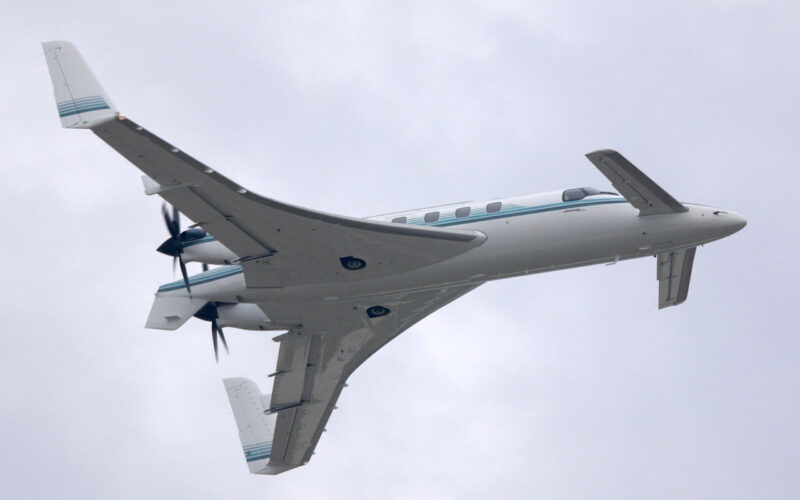
The Beechcraft Starship 2000 was the epitome of luxury personal transport for the wealthy. An extremely beautiful design that ultimately failed.
This is now a very rare aircraft and you’d be lucky to see one in person in your lifetime.
Design and Background
The usual Starship was to be a successor to the King Air. It was faster and could carry more passengers, up to a maximum of eight.
She has several eye-catching features; variable geometry canards at the nose, the pusher propellers, winglets and lack of central tail. For an aircraft that first took flight in 1986, this was space age-looking.

But it was what you couldn’t see that helped make this aircraft incredibly futuristic – the use of carbon fibre. No civilian plane had ever used it to such a degree.
With the canards being at the front, like many modern jet fighters, the Starship was incredibly hard to stall. In such a scenario, the front lifting surface will stall first, dropping the nose, increasing speed and allowing normal flight operation to continue.
The winglets provided the yaw control. Although unusual looking, it provided adequate performance. Beechcraft called them ‘Tipsails’.

Engine placement and the choice of pushers was to help reduce noise in the cabin, having them face away from the passengers projecting noise behind the Starship made it significantly quieter.
Top speed was 385 mph (620 km/h) with both Pratt and Whitney Canada PT6A-67A turboprops putting out over 1,200 shaft horsepower each.
Operational Usage
This was not what you would call a successful aircraft. Beechcraft only sold 11 in three years despite the space-age design. To help alleviate this, they began offering two-year lease deals. But ultimately this did not turn things around for the Starship.
In comparison to some other aircraft at the time, it was expensive and slower. Costing a cool $3.9 million in the late 80s it certainly wasn’t what you’d call cheap.
This was similar to private jets and over $1 million more expensive than equivalent propeller-driven aircraft with higher performance.

By 1995 production had come to a close. A small fleet of aircraft was far too expensive to continue maintaining. Leading to the Starship’s demise. All under Beechcrafts ownership were scrapped and incinerated – a sad end to any aircraft’s life.
Specifications
Crew: 1 or 2Passengers: 6 to 8Length: 46 ft 1 in (14.05 m)Wingspan: 54 ft 4.70 in (16.5 m)Height: 12 ft 1.1 in (3.6 m)Empty weight: 10,120 lb (4,590 kg) standard empty weightMax takeoff weight: 14,900 lb (6,759 kg)Powerplant: 2 × Pratt & Whitney Canada PT6A-67A turboprop, 1,200 shp (890 kW) eachPropellers: 5-bladed, 8 ft 8 in (2.64 m) diameterMaximum speed: 385 mph (620 km/h)Cruise speed: 353 mph (568 km/h)Range: 1,742 mi (2,804 km)Service ceiling: 41,000 ft (12,500 m)Rate of climb: 2,748 ft/min (13.96 m/s)